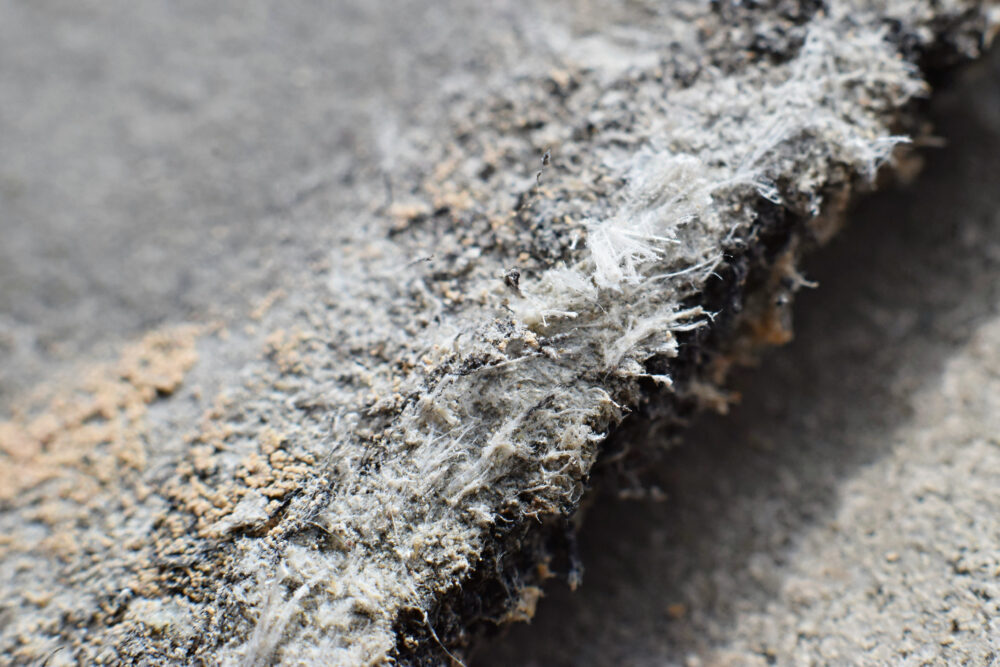U.S. Government Is Falling Behind Inspecting Federal Buildings for Toxic Asbestos, GAO Report Warns
Asbestos risks in older federal buildings makes it difficult to sell them and recoup taxpayer money spent on cleanup and maintenance, officials say.

Hundreds of U.S. federal buildings nationwide have not been inspected for toxic asbestos in decades, and investigators could not determine if hundreds more had ever had an inspection, as required by law, according to a new report from a government watchdog agency.
The U.S. Government Accountability Office (GAO) released the findings of a report on federal building asbestos inspections on March 4, determining that the General Services Administration (GSA) is failing in key areas of its responsibilities to ensure the safety older buildings.
The GSA is tasked with tracking the cost of environmental cleanups and conducting regular inspections for environmental and hazardous contamination on federally owned property. Guidelines require the agency to conduct asbestos inspections every five years on any federally owned building built before 1998, even those that are sealed from being used or intended for sale.

Learn More About
Exposure to asbestos can cause the development of mesothelioma. Lawsuits have been filed nationwide against asbestos manufacturers.
Learn More SEE IF YOU QUALIFY FOR COMPENSATIONHundreds of Buildings Never Inspected for Asbestos
The GAO report was intended to detail the frequency of how often environmentally contaminated federal buildings are inspected before being cleaned up and sold.
However, what investigators found was that more than two-thirds of buildings requiring inspections, roughly 600, haven’t been inspected in more than five years. The report also indicates that the records and information for more than 200 buildings requiring asbestos cleanup are outdated, and it is unclear when the buildings were last inspected.
The report indicates that 31% of the required buildings were not inspected in the last 5–10 years. Another 32% of buildings hadn’t been inspected in 10–20 years, while 36 hadn’t been inspected in more than 20 years, or didn’t have updated records on when they were last inspected.
Hundreds of buildings had no regular inspections, the GAO found, and the records for hundreds more have not been kept up to date. Some buildings had no known inspection dates at all, according to the report’s findings.
Asbestos Exposure Risks
Asbestos exposure has long been linked to numerous health problems, such as lung cancer, asbestosis and mesothelioma, and lawsuits over exposure to the toxic fiber have been filed against manufacturers, property owners and others responsible exposing individuals to asbestos.
More than 600,000 people have filed asbestos lawsuits against approximately 6,000 defendants, all raising similar allegations that manufacturers and sellers of products containing asbestos knew about the risk of mesothelioma and other asbestos injuries, yet failed to provide adequate warnings.
Last year, the U.S. Environmental Protection Agency announced the final approval of a new asbestos reporting rule, which will require companies that still manufacture or process asbestos or asbestos-containing materials to disclose the quantities of asbestos, types used, and provide data on employee asbestos exposure events.
In addition to the health risks of asbestos exposure, the presence of the material also makes it more difficult for the GSA to sell buildings that the government no longer needs, especially when the inspections haven’t been conducted regularly and the records are not current.
GAO Asbestos Inspection Recommendations
The GAO report’s recommendations call on the GSA to ensure asbestos inspections are completed per policy regulations or to update the policies to address the backlog. However, GSA officials said the buildings were out of compliance due to funding, staffing challenges, incomplete records, and limitations with the databases used to track inspections.
The agency also indicated it is developing a plan for completing the outstanding inspections and considering changes to the policy to focus on a risk-based inspection approach. The GSA did not include specifics of the plan, or timelines for completing the remaining inspections.
Beyond asbestos, the GSA is also responsible for the environmental cleanup and disposal of non-asbestos materials, including lead paint, toxic chemicals and petroleum. The GSA estimates asbestos and non-asbestos contaminated properties account for 95% of its liabilities. Its total environmental liabilities reached over $2 billion in 2022.






0 Comments